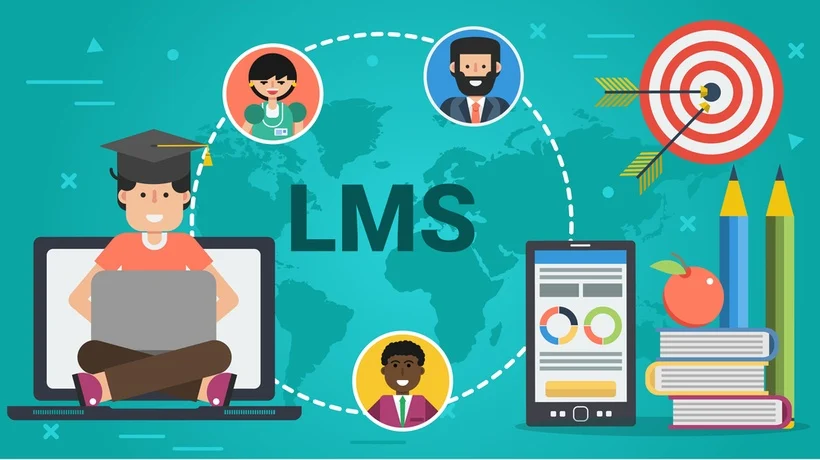A learning management system (LMS) is a web-based platform or technology that offers anytime and anywhere learning. LMS has evolved from a digital learning tool to a training management tool. This evolution is fueled by rapid digitization and technological interventions like- artificial intelligence (AI) and machine learning (ML). Visit here to see some of the most popular learning management systems in the 2024 market.
Today, LMS has become an integral part of corporate learning. With mobile devices, the Internet, and opportunities to work remotely, the physical barriers to training have been eradicated. It has enabled organizations to provide equitable, affordable, and qualitative learning and training by being cost-effective.
Wondering how LMS helps reduce the educational expenses of an organization? So here is the answer:
1) Reduce trainer’s costs

For effective training, good subject-matter experts are important. They can be outsiders or in-house subject-matter experts. However, both of them come at an immense cost.
If the trainers are outsiders, exorbitant training fees tend to be restrictive for the organization. And if the trainers are in-house subject-matter experts, they are driven away from core activities and responsibilities. Thus, wrestling with their time and energy acts as another cost.
Here is when LMS comes to the rescue of organizations. It replaces on-the-job training with online training that lessens the organization’s expenses.
2) Reduce maintenance costs

Expenditure on infrastructure, venue (training halls and rooms), depreciation of assets (tables, chairs, whiteboards, etc.), and recurring expenses (water and electricity bills) somehow act as major factors in increasing the tuition fees of courses.
With LMS, these costs are being narrowed down, thereby ensuring equitable and affordable access to training. The organizations thus can induct more students.
3) Reduce material costs

When your company opts for traditional methods of training like classroom-based training and instructor-led, in-person classes, it is natural that both the instructor and the learners need things like, diaries, stationery, and notebooks to write down notes and important information. Printed course material in the form of textbooks may also be needed. These physical materials do not just become a burden to carry but also they also lead to added costs. Since many companies decide to bear the cost of such material for the employees, it becomes a major budget issue for them.
With an LMS, one can access all the material in electronic form, anytime and anywhere, by just logging into their account. This offers convenience-based education. Also, the uploaded material can be edited and updated as per requirements and changing needs. Since the electronic material becomes very accessible, things become easier for both the instructors and learners. It also empowers the learners with the ability to refer to the material whenever they want which leads to a continuous learning process.
4) Reduces ‘productivity cost’

Unlike academic organizations where learning is the sole purpose, in a running business organization, learning is supposed to be done alongside the daily job responsibilities. The employees of the organization are required to actively participate in the training process for the purpose of skill development and thus, performance improvement. Thus it is important for the employees to be able to keep a balance between their work and training.
When companies decide to train their employees through traditional methods, the process becomes pretty time-consuming. The employees must travel to the venue and sit for scheduled training hours. During these hours, the under-training employees cannot really work which affects the overall daily productivity of the company. The reduced productivity can directly translate into a monetary loss i.e. productivity cost.
Using an LMS can make the learning process more efficient and flexible. Since LMSs promote asynchronous learning, the employees can adjust their learning hours according to their work hours to ensure maximum productivity. For example, the employees might learn during their free time during the evening or they can refer to training material during a travelling to work. The self-paced learning process will also promote a sense of responsibility and save a lot of time that can be utilized more productively.
5) Reduce assessment cost

Assessment of learners is one of the most important criteria to understand their understanding of topics. Previously, such assessments were done using pen and paper in enclosed rooms. However, LMS eliminates this traditional approach for assessment.
With the help of LMS, learners can be assessed on multiple parameters in several ways. E.g., trainers can create MCQs, fill in the blank, questionnaires, etc., which can be attempted anytime.
6) Reduce tracking and evaluation costs

LMS allows organizations to constantly track and evaluate learners’ performance until the targets are accomplished. This is achieved in the following ways-
- LMS comes equipped with a dashboard that gives a bird’s-eye view of the entire training activity. Like – as assessment of completion of training, assessment of performance, statistics related to participation and engagement.
- Grades and reports are automatically generated, which can be accessed anytime. They can be stored in PDF or word format, and hence completely do away with the need for paper-based reports.
7) Reduces error and security costs
When the company is large in size and there are a lot of employees to train, it is natural that an instructor-based training program will require training the employees in batches. This can lead to inconsistencies in the learning process. Similarly, during compliance training, there might be minor inconsistencies and training errors that can lead to serious compliance violations by the employees. These violations can translate into fines, legal fees, and losses.
While training the internal members of the organization, the material might include sensitive information about the organization. The personal information of the learners might also be at risk in some cases.
Using an LMS can reduce these risks and the monetary losses related to such errors and security risks. As all of the training material can be stored in a centralized location, consistency and standardization of the training can be ensured. By limiting the learner’s access permissions, you can also handle the security risks.
Conclusion:

Interestingly, LMS, apart from being a cost reducer, can also act as a revenue enhancement tool. It has undoubtedly led to the global EdTech boom. By charging for registration fees, learning material, and mock tests, these organizations are reaping huge profits.
Thus, we can conclude that LMS can help in achieving good learning outcomes at a lower cost. It is a win-win situation for both the learners and organizations.









